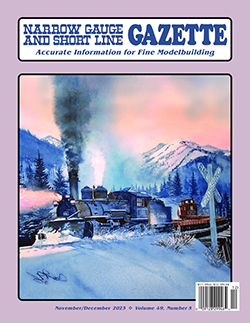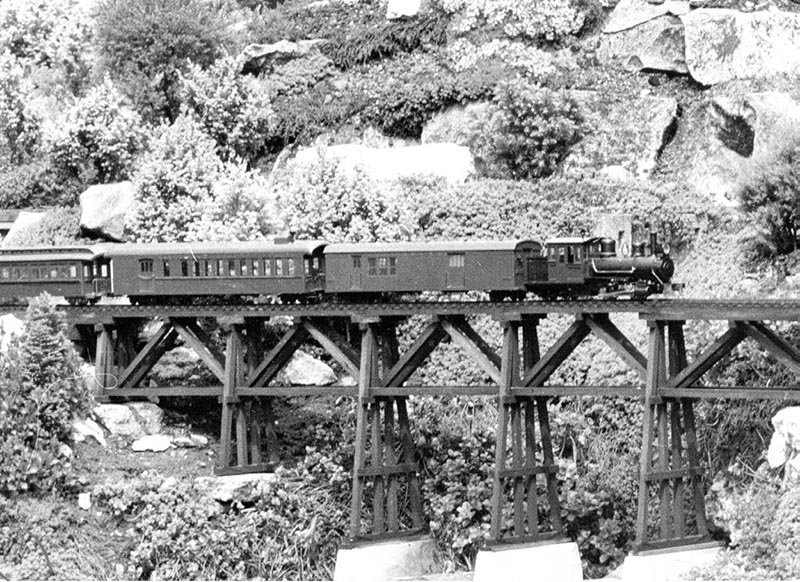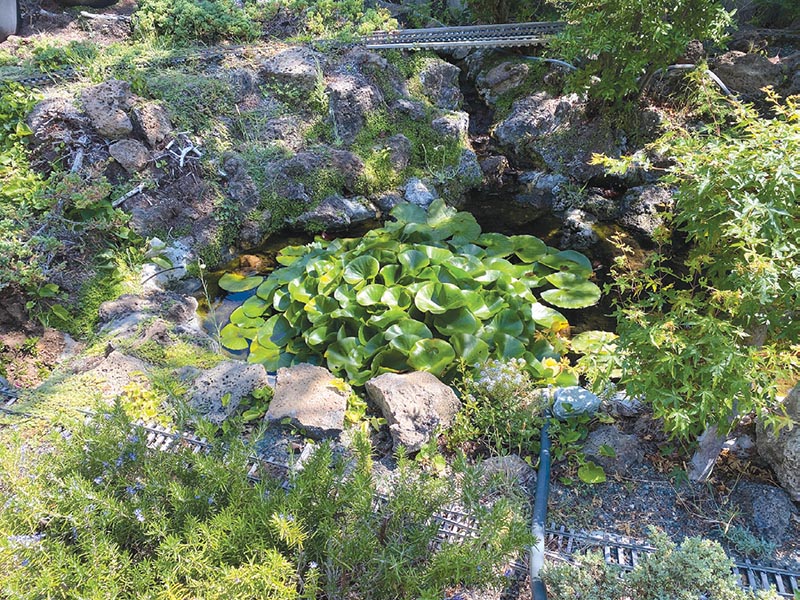 I have been corresponding with William Longely-Cook for several years. William often sends photos of his latest garden railway project and I sometimes put the photos in the “Pigeon Hole.” I assumed his garden line was G scale with Bachmann locomotives and rolling stock. Then I read in Narrow Lines (the magazine of the 7mm Narrow Gauge Association) that he had won First Place in the Association’s annual contest with his 7mm scale Redgate Mill (see January/February 2023 Gazette). I wrote to congratulate him and said that I didn’t re-alize he also modeled in 7mm scale. That was when William told me his garden line was On30 and that he had written an article about it in White River Productions 2021 debut issue of Garden Trains Annual. I had missed the article. After scraping the egg off my face, I asked William to write an article for the GAZETTE about his garden layout and he has done so on page 22.
I have been corresponding with William Longely-Cook for several years. William often sends photos of his latest garden railway project and I sometimes put the photos in the “Pigeon Hole.” I assumed his garden line was G scale with Bachmann locomotives and rolling stock. Then I read in Narrow Lines (the magazine of the 7mm Narrow Gauge Association) that he had won First Place in the Association’s annual contest with his 7mm scale Redgate Mill (see January/February 2023 Gazette). I wrote to congratulate him and said that I didn’t re-alize he also modeled in 7mm scale. That was when William told me his garden line was On30 and that he had written an article about it in White River Productions 2021 debut issue of Garden Trains Annual. I had missed the article. After scraping the egg off my face, I asked William to write an article for the GAZETTE about his garden layout and he has done so on page 22.
I have never seen an article in the U.S. model press except in Garden Trains Annual about an On30 or On3 garden railway, and think the idea is innovative. So much more in the same space. I built a major 15mm scale, 45mm gauge garden railroad with major help from Jack Verduchi in our side yard and exhibited it for many years at Bay Area Garden Railroad Society open houses and several National Garden Railroad Conventions. I laid my track on granite fines on a foundation of 6 tons of stones and used some 2000 pounds of cement. I even dug a pond. A lot of hard work and yes, I lost weight.

ABOVE: One of Bill Strickland’s 8.25 scale, 2-foot gauge locomotives crossing a trestle. I saw Bill sit on this trestle to prove how strong it was. The bridge was left over from his OO gauge garden line.
As the years passed, I found it harder and harder to crawl over the rocks for maintenance or to rerail an errant locomotive. After two serious falls I began rethinking my garden line. Nancy Norris, who maintains my little trees, built some stone steps into the layout but they didn’t help. Then my late wife, Irene, fell while adjusting a water bib and broke her hip. That did it and I went back to my indoor On3 Tuolumne Forks Logging layout. So, I have the experience to say William may have an innovative idea, using his techniques will result in more trains in a given space, simpler framework and track and by using Power on Board (“dead rail”) no track cleaning is necessary. Incidentally, I also used Dead Rail by putting batteries and controls in four-wheel cars and plugging them into locomotives. Works great.
One modeler who did build models to run on 16.5mm gauge in the garden was the late Bill Strickland. Bill lived in England and built an OO gauge layout (16.5mm gauge, 4mm scale) in his garden with his son. When his son moved away, Bill kept his right of way and divided 16.5mm x 2 and got 8.25mm so he began modeling two-foot gauge models in 8.25mm scale. Irene and I visited his layout in 1971 and it ran reliably without Dead Rail. Bill wrote a small book titled Chronicles of a Garden Railway that describes his unusual techniques. It’s still available from Amazon.
On30 in the garden would be less expensive than G scale, commercial flex track and turnouts would cost less, and Dead Rail would eliminate track cleaning. Worth a try? Please let me know if you have already done an On30 or On3 garden railroad or decide to have a go and share it with GAZETTE readers.
—Bob Brown, Editor
 This article appeared in the Nov/Dec 2023 issue of Narrow Gauge & Short Line Gazette. Subscribe Today!
This article appeared in the Nov/Dec 2023 issue of Narrow Gauge & Short Line Gazette. Subscribe Today!


